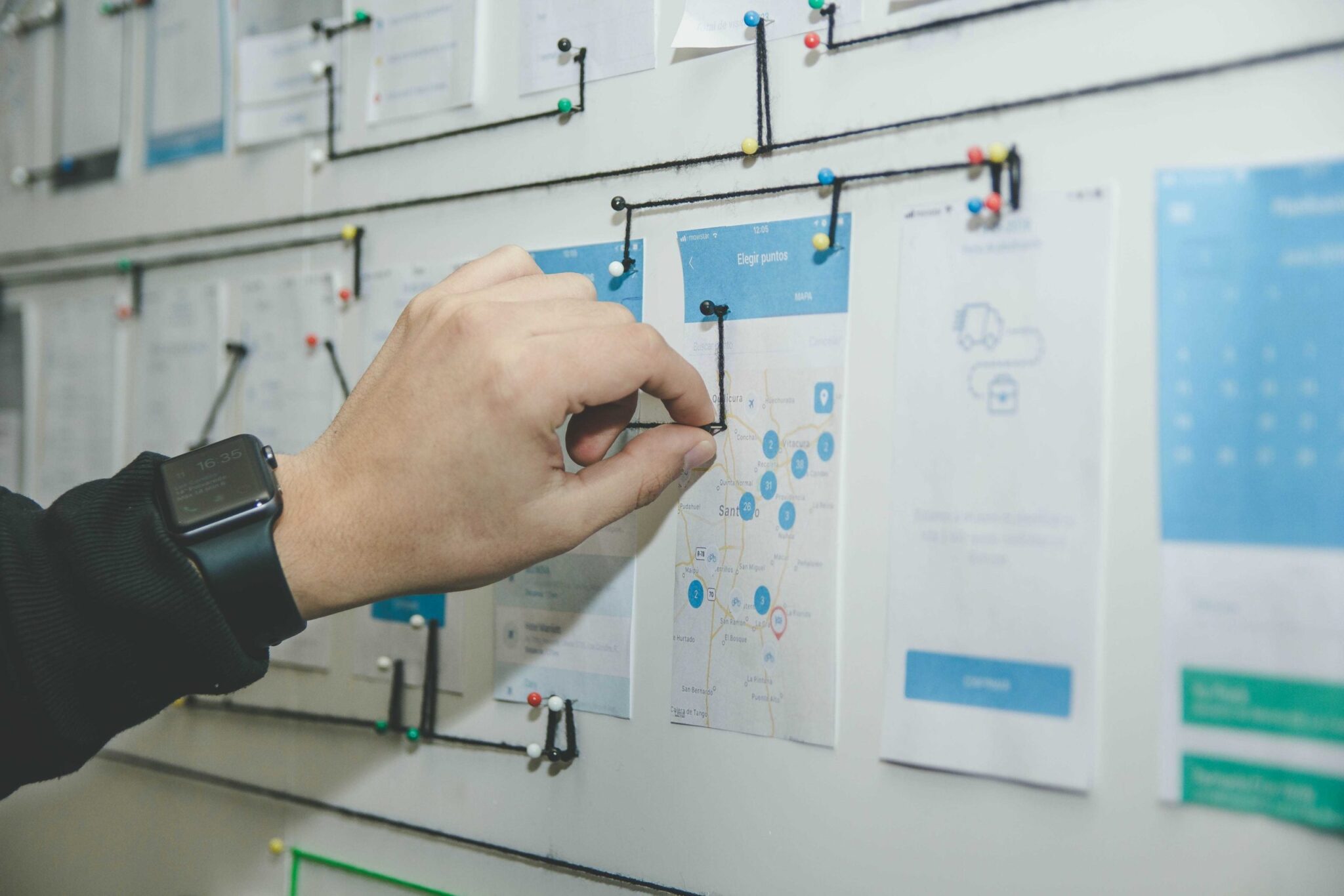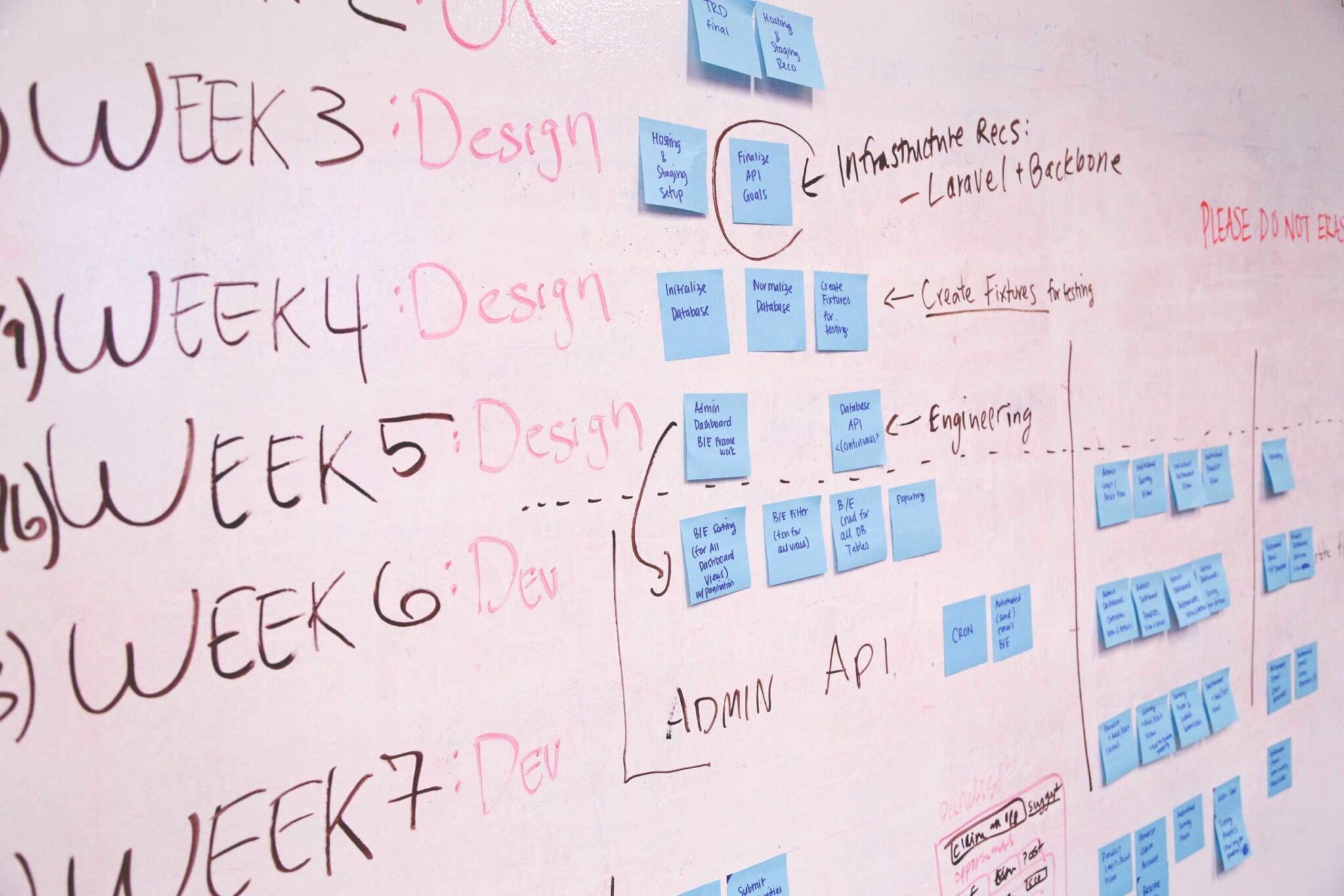UX Design Checklist
While the UX Design industry as a whole has stabilized and well-established rules, UX design for enterprise software and complex systems is quite challenging and requires a specialized set of skills.
Our mission at Koru is to end ugly, hard-to-work with software. We know the most impressive, complex systems deliver zero value if the UX fails to fire. We also know the hit this causes to the bottom line for business in terms of customer retention and employee satisfaction – remember, employees have to use terrible software every day!
A great-looking UX that delivers clunky functionality fails just as hard as a complex system using fifty bells and whistles to cover for the fact that it can’t achieve its number one goal. The UX is 100% embedded in the end user’s perception of value and drives satisfaction, loyalty, and lifetime value.
This is where the value of having a well-defined UI/UX checklist comes into play. With clarity on the UX task list, one can ensure that the UX project timelines are met.
If you too share our passion for UX Design, check out our 10-point UX Design checklist that you can use throughout your project for optimal results.
UX/UI checklist overview:
High-level project strategy considerations
1. Choose the technology and approach wisely
2. Responsive, responsive, RESPONSIVE!
3. Effective and easy right from set-up
4. Play nice with third-party tools
Design level considerations
5. Quantify the benefits of your design
6. Advocate Iteration
7. Start broad and narrow down
8. Focus on the user, not the process
9. Explain design decisions as business decisions
10. Master the art of feedback
1. Choose the technology and approach wisely

Getting the chance to work on UX Design for large, complex systems is a HUGE task, make no mistake about it. It’s something you might only get one or two shots at in your career which also makes it a HUGE opportunity for you to really nail an industry-defining project.
The results of all your work will last years, so you want it to be something that all stakeholders (including yourself) are proud and excited about.
Keep in mind also the rapid pace of change in both the consumer and tech landscapes – factor in how long it will take to deliver the project and anticipate coming changes. You don’t want your efforts to look dated on launch day.
It’s crucial the design strategy keeps the future in mind and the technology chosen is not only based on the latest currently available but is advanced enough to account for trends that may be just around the corner.
2. Responsive, responsive, RESPONSIVE!

We really can’t stress it enough. Responsive is the name of the game today (it has been for several years) and just because your product is niche/complex/ large, you don’t get a pardon.
Users change devices faster than they change clothes. Finding a way to let them start from where they left off, regardless of which device they were on is key to how their experience builds. So responsive or not is not even a question. The question is – how to handle this for complex systems?
The best way is to begin by understanding the user’s role. For mobile applications, divide the apps based on the tasks your users will perform and the role each plays. For example, while the ERP may have all modules in one app – from booking an appointment to billing and from managing user profiles to employee payroll – the mobile experience should be built strategically.
Some key questions to consider are:
- Who are the top five users across all devices?
- What are the most frequent tasks they do using your software?
- How can you shed some of the features but retain the core functionality?
- Which features can they live without (on mobile) if they have to?
Investing time and effort now gives the UX longevity and provides real value for your client and the user.
3. Effective and easy right from set-up

UX begins from the moment the potential client considers your product right through to project completion when the end-users are enjoying it daily. While customization and integration are core parts of complex, large-scale software, you need to keep in mind (no matter how difficult) that setup and configuration is where the user experience begins.
4. Play nice with third-party tools

Enterprise-class clients tend to switch from one product to another every few years. When they switch to your product, you need to ensure the transition is as smooth as possible. Consider how they will plug in their existing data, how they will carry out the transition, and how you can support the bulk import/export/ conversion capabilities they’ll need.
5. Quantify the benefits of your design

When you take up the challenge of building a complex system from scratch or revamping an existing body of work (whether in one shot or in stages), make it matter. Push everybody in the team to quantify the benefits of the exercise so it isn’t merely a facelift or technology upgrade but something which affects the real bottom-line – user-friendly training, set-up, and configuration support, a reduced number of calls to customer care, after sales support, new markets (globalization), increased productivity and so on.
When you take up the challenge of building a complex system from scratch or revamping an existing body of work (whether in one shot or in stages), make it matter. Push everybody in the team to quantify the benefits of the exercise so it isn’t merely a facelift or technology upgrade but something which affects the real bottom-line – user-friendly training, set-up, and configuration support, a reduced number of calls to customer care, after sales support, new markets (globalization), increased productivity and so on.
Productivity means more profit, greater employee satisfaction, and less churn. Quantify this and sell it to your client.
And if the UX Designer proposes a big change in workflow, which is difficult to build – but you know, in the long run, it will provide a huge benefit for end-users – you’ve got no option but to go for it.
6. Advocate Iteration

Do you have the best of the best in your team? Are your stakeholders highly motivated? Are there firm deadlines? Is money no issue? Good for you! But even then, the truth is that design is an iterative process and it becomes better with each iteration.
Strike a balance between a mindset that thinks perfection can be achieved on the first shot against a mindset of grilling yourself and the team because the 15th iteration is still not perfect. There is no perfect design – the best product is always under development.
Draw a line in the sand and decide what is good enough for this time and place and then work towards your ideal outcome with the smallest number of iterations.
7. Start broad and narrow down

When you set out to build or revamp your system, it’s healthy to brainstorm and evaluate a range of ideas that bring in more functional value and make the workflow more efficient. It’s wise too, to run each suggestion through an intense validation process before deciding whether to run with it – or not.
But, once you’ve found what you believe is the best solution, stick with it. Exploration and brainstorming are critical but there absolutely comes a time where you need to settle on one plan or direction.
Don’t let doubt creep in. It will divert your energy and focus, and the “minor tweaks” you propose are likely to land you with broken workflow patches, increases in timelines or cost, and a loss of confidence in the team.
8. Focus on the user, not the process

You have to be mindful of the demographics of the end-user – what task do they need to perform, how skilled or technically qualified are they, what language do they speak?
Your system will never give you the best value if it’s built with a focus on the workflows and tasks you (as senior management) perform. Getting the job done for the people who’ll be using the product most ensures you bag the best value, which is why this user needs to be your driving focus.
A system that appears to be brilliant yet misses the mark and pitches itself above the capabilities of the average user will fail – every time.
9. Explain design decisions as business decisions

The design of your system has a direct impact on productivity, which in turn has a direct impact on your bottom line. The design motivates users to engage with the system and use its full potential. If end users can’t do this, they’ll revert to old habits or manual systems, which costs everyone in the end.
The design of your system has a direct impact on productivity, which in turn has a direct impact on your bottom line. The design motivates users to engage with the system and use its full potential. If end users can’t do this, they’ll revert to old habits or manual systems, which costs everyone in the end.
Stakeholders will buy the language of business goals faster than the language of design.
An approach that says “let’s choose a material design framework here because it will work for the web as well as mobile, especially for our user base, who are largely using Android devices” works better than “let’s use a material design because it’s the latest framework and looks really sleek.”
10. Master the art of feedback

From the Stone Age to the 21st century, those who’ve mastered the art of feedback have proven time and again to be successful. To be leaders.
Your feedback has the potential to mold and shapes the system through its various stages of development, so make it impactful. Clearly define your opinion in a crisp and quantitative way – explain what you like, what you don’t like, and why. This not only helps you limit the grey areas but also builds a common understanding among the team.
The stakes are higher with UX projects for complex systems since there are already a lot of other challenges involved, so own your role in the communication process.
If you’re searching for a reliable UX design agency that can deliver high-quality, well-researched, and thoroughly-tested user experiences that make your product a pleasure for your end-user to interact with – let’s chat.









